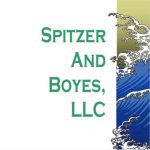-
…was Greg Scheu, vice president in charge of motors, drives, and process instrumentation. His group did $6.8 billion in revenue in 2006, and a lot of that came from North America. He asserted that his was ABB’s most profitable division, with a strong 23% growth rate, and significant growth in North America, as well.
…then came Roger Bailey, who runs control systems and the pulp and paper vertical. $5.4 billion, he said, “2006 was our best year ever!” This was especially true of what he called industry specific products…custom or semi custom versions of control systems for specific industries, often packaged with other products like drives or motors.
Since Bailey is ABB’s old pulp and paper hand, he was tickled to death to point out that there have been 6 new greenfield tissue machines in North America built recently, and ABB got the drives and controls for all six.
He said that ABB’s process optimization services have ramped quickly from $0 to what will be a $50 million business by the end of 2007, with payback ratios ranging from 5 to 1 to 18.9 to 1, averaging a 10.5 to 1 payback over baselines from 30 to 90 days!!!
Kirk Goins gave the gospel on robotics. $1.3 billion in 2006, with high spots in the robot welding area (grave shortage of qualified master welders due to retirements– same song different verse); a new LEAN robot that is lighter, cheaper, and tougher…and something Goins called “Advanced Force Control,” which basically is the ability for a robot to feel.
Sandy Taylor, country manager for both Canada and Oil and Gas chief for ABB gave an upbeat report claiming that ABB is number 1 in oil and gas DCS business with greater than 30% market share. Taylor shared some interesting applications from India, along with the Devon Energy Jackfish project that I’ve written about for plus a year now, Mustang Engineering’s Ceiba FPSO, and an interesting new collaborative (there’s that word again, eh?) development to produce more efficient oil and gas fields between Statoil, ABB, IBM, Aker Kvaerner and SKF.
Next, ABB chief technology officer Peter Terwiesch reported on what he believes ABB should be concentrating the $1.1 billion in R&D funding on:
*communications
*wireless
*energy and efficiency
Terwiesch pointed out that ABB has been a pioneer in wireless technology, and showed some slides that had a very interesting view of the “wireless cloud.” “I don’t recommend wireless for critical closed loop control,” he said, “but in discrete automation, it is very much the other way around.”
He noted that energy utilization in manufacturing is approximately 20% efficient. He called energy efficiency “the other alternative fuel” and claimed that ABB technologies, properly applied, might be able to increase that to as much as 50% efficient. He said we will have to:
*move more power through existing systems while avoiding the NIMBY reaction
*manage market-driven power flow given the physical limits of infrastructure
*connect the grids
*store some energy, especially from alternative fuel sources with no inherent storage
*generate differently and more efficiently
*provide better quality power at higher efficiency.
Finally, Dinesh Paliwal mounted the rostrum again. He shared some statistics from this year’s Automation World attendance. 97% of attendees are looking to ABB for information on trends and new products. 70% of them are expecting to purchase in the next 12 months. 46% of attendees have attended one or more previous Automation World events.
There are, he said, 2575 attendees, and there has been a 28% increase in non-ABB attendees. There are 350 workshops, most taught by ABB customers themselves, and 25% larger exhibit space than last year’s event.
He closed by summarizing what had been said, and then announcing the dates and location for next year’s Automation World: April 29-May 1, Hilton Americas in Houston.
Technical Services And Strategic Consulting For Technology Companies

